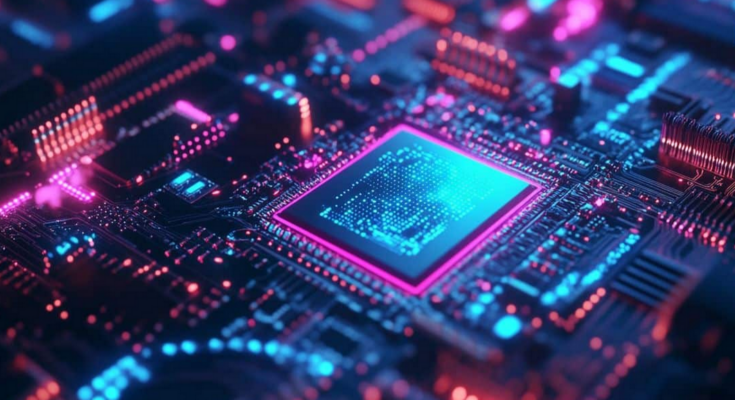Key Takeaways
- Strong demand for AI and semiconductors drove a 1458% increase in Samsung’s Q2 profit, increasing net income to 9.64 trillion WON.
- Samsung plans to significantly increase its revenues by 2028 by expanding its foundry business and cooperating with Nvidia for AI processors.
- Sales of energy storage increased as Samsung SDI’s revenue decreased; by 2030, the business intends to make significant expenditures in chips and artificial intelligence.
The earnings report from Samsung
Analysts were pleasantly surprised by Samsung Electronics Co.’s profits. Positive AI demand caused the company’s operating profit to rocket by 1458%, and its net income growth accelerated to its quickest level since 2010.
The company’s initial revenue was 74.07 trillion won ($53.45 billion), while analysts predicted it would generate revenue of about 73.74 trillion won. Revenue for the quarter rose by 23.42%.
At the same time, operating profit rose by 1458%. Conventional memory, growing AI investments, and dynamic random access memory all contributed to higher sales. For the second quarter, the business will distribute a dividend of 361 won ($0.28) per common and preferred share.
The company’s net income reached 9.64 trillion won ($7.52 billion), a sixfold increase. Semiconductors contributed 6.45 trillion won (about $5.03 billion), which accounted for the majority of the growth.
Microchips that offer faster processing speeds for AI and aid in energy savings saw a 50% rise in sales over the previous quarter.
The company’s report states that there was a high demand for server applications and that by mass-producing 128GB products, it strengthened its position in the DDR5 market.
Samsung anticipates that in the second half of 2024, AI servers will take the largest share. It is now working on high-density products like 32GB DDR5 1b-nm.
Additionally, Samsung’s foundry business expanded. Compared to the previous year, the demand for high-performance computing (HPC) and sub-5nm technologies doubled. With a fourfold growth in clients and a ninefold increase in sales by 2028, the foundry industry is anticipated to grow HPC orders.
Samsung SDI Profits
The company’s energy storage and renewable energy sectors likewise released their results the day before its earnings.
With revenue of 4.45 trillion KRW (about $3.47 billion) and operating profit of 280.2 billion KRW (roughly $219.56 million), Samsung SDI reported a 24% YoY reduction in revenue and a 13% QoQ decline. A major indicator, operating profit, fell 38% from the previous year.
Increased sales of Samsung Battery Boxes (SBB) and UPSs (uninterrupted power systems), supported by the growth of artificial intelligence (AI) and support for renewable energy, helped the Energy Storage System (ESS) segment post better results.
Operating profit increased marginally to 72.2 billion KRW (about $56.32 million), while the company’s Electronic Materials division witnessed a 1% YoY growth in revenue at 577 billion KRW (around $450.06 million).
Samsung and Rivals
The business recently received approval from Nvidia to produce high-bandwidth memory chips called HBM3 for its H20 CPU, which is good news. It expects to be certified for an even more sophisticated version, known as HBM3E, by November 2024. Morgan Stanley projects that HMB chip sales will rise from $4 billion in 2023 to $71 billion in 2027.
But the business also predicts that the supply of these chips would decline by 11%, resulting in a 23% reduction in the total supply of DRAM. Since the revelation, Samsung’s stock has been falling due to supply chain interruptions, economic uncertainty, and a decline in consumer electronics demand. They had lost 11% in the last five days as of August 5.
However, if Samsung Electronics Co. joins forces with Nvidia and other businesses, sales may rise. Morgan Stanley predicts that Samsung’s target price would rise by 36% to 105,000 won, or about $82, in 2025.
Samsung Price Forecasts
The business has already raised its expenditures on research and development to 11%. With more than $100 trillion in cash on hand, it is well-positioned to profit from the expanding chip and AI markets.
The company’s operating profit margin for semiconductors can rise even further, claims Bloomberg Intelligence. But there will likely be fierce competition for SK Hynix, a pioneer in high-capacity memory utilized in AI-powered applications.
Nonetheless, Samsung Electronic Co. declared that by 2030, it will invest 133 trillion won, or around $103.74 billion, in logic chip companies. Additionally, Samsung is anticipated to make significant investments in AI-powered smartphones, such as those with neural processing units (NPUs). Experts predict that by the end of 2024, the stock price might reach 95,203 KRW (about $74.26), and by 2029, it could reach 148,699 KRW (roughly $116.98).



